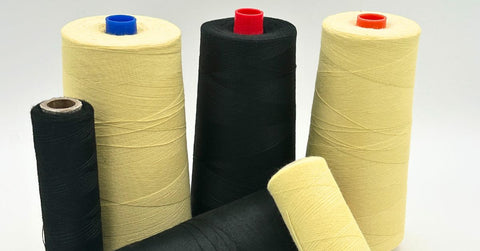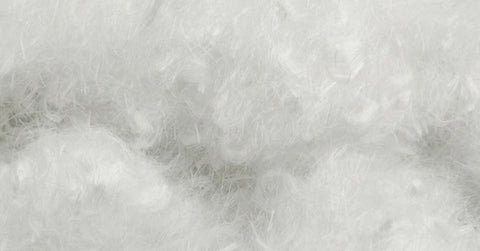From body armor to spacecraft gear, Kevlar® is a name that represents strength, safety, and innovation. Known for being lightweight yet five times stronger than steel by weight, Kevlar® has revolutionized how we think about materials under extreme conditions.
But how does this incredible fiber come into existence? Today, we take you behind the scenes of Kevlar® fiber production and raw materials. Uncover the meticulous processes and remarkable chemistry that transform it into a global standard for safety and performance.
The Birth of Kevlar®: A Quick History
Kevlar® was first discovered in the 1960s by Stephanie Kwolek, a pioneering chemist at DuPont. Tasked with developing lighter, stronger materials for automobile tires, Kwolek stumbled upon an unusual liquid crystalline polymer. This groundbreaking discovery laid the foundation for what would become one of the most robust industrial fibers known to science.
What was initially intended for tire reinforcements quickly found its way into military applications, then aerospace, sporting goods, and beyond. Over the decades, Kevlar® has evolved into a versatile material used across industries and firmly established itself as an industrial benchmark.
Kevlar® Raw Materials: Building Blocks of Strength
At the heart of Kevlar® lies para-aramid polymers, or poly-paraphenylene terephthalamide. This complex chemical compound is what gives Kevlar® its extraordinary mechanical properties.
The secret lies in the molecules themselves. Aromatic rings, structured in rigid planar shapes, combine with amide bonds to create an interlocking molecular structure. This arrangement gives Kevlar® exceptional tensile strength while maintaining a low weight.
That was a lot of information that might not mean much to you. In simpler terms, its molecules link together like tightly locked puzzle pieces, giving Kevlar® extraordinary toughness without extra weight.
Sustainability concerns have encouraged manufacturers to refine the sourcing and production of these raw materials. For example, adopting advanced chemical processes and recycling systems minimizes waste and environmental impact.

Inside the Production Process
What transforms these raw polymers into Kevlar® is a fascinating, multi-step process. Below, we break it down step by step to reveal how science and engineering come together to create this remarkable fiber.
1. Polymerization
The production process begins with polymerization. This process involves combining raw chemicals to form the liquid crystalline solution. This solution acts as the molecular backbone of Kevlar®, ensuring its integrity from the start. Here, the precise control of chemical ratios and conditions sets the stage for the fiber’s strength.
2. Spinning
Next, the liquid solution undergoes a spinning process. Spinnerets, devices with tiny nozzles, extrude the liquid crystals into solid fibers. These fibers appear as thin filaments but already possess unique structural qualities.
3. Stretching and Alignment
Once formed, the filaments are carefully stretched and aligned. This step organizes the polymer chains into parallel structures to maximize molecular bonds for increased tensile strength. It’s this meticulous alignment that enables Kevlar® to outperform other materials, like nylon or polyester, under stress.
4. Heat Treatment and Solidification
The next step involves heat treatment, where the fiber is exposed to controlled high temperatures. Heat treatment ensures Kevlar® can withstand the blazing conditions of a fire or jet engine. At this stage, the fibers truly lock in their defining traits and solidify their properties.
5. Weaving Into Usable Forms
Finally, these filaments are woven into various formats. From fabrics to multifilament core fiber, Kevlar® adapts to each industry’s specific performance needs. The final material result is a flexible, robust product ready for rigorous testing and real-world demands.

Properties That Make Kevlar® Exceptional
What sets Kevlar® apart from other fibers is its combination of unique properties that cater to extreme environments and rigorous applications. Here’s why engineers, soldiers, and athletes trust Kevlar® over other fibers:
- Tensile strength: Kevlar® resists stretching and breaking under extreme loads, making it a trusted choice when failure could mean risk to lives or critical operations.
- Heat resistance: Kevlar® does not melt and maintains integrity even at extreme temperatures, only decomposing above 800°F (427°C).
- Chemical resistance: Kevlar® is resistant to oils, fuels, and solvents, safeguarding its performance in chemically harsh environments like oil and gas operations.
- Lightweight comfort: Despite its toughness, Kevlar® remains lightweight (about half the density of fiberglass), an essential property for its use in body armor and sports equipment.
- Durability: Kevlar® exhibits unmatched longevity under stress to ensure reliability in applications where dependability is non-negotiable.
Applications Across Industries
The versatility of Kevlar® has propelled it into a wide range of industries, where its properties cater to both critical and everyday needs.
Aerospace and Aviation
In aerospace and aviation, weight savings translate directly to efficiency and safety. Kevlar®’s strength-to-weight ratio makes it an essential material in lightweight fuel tank linings, composite panels, and spacecraft protection systems.
Military and Defense
That same combination of strength and lightness becomes lifesaving in military and defense applications. From bullet-resistant body armor and helmets to armored vehicle panels, Kevlar® provides mobility and protection without the burden of heavy metals.
Oil and Gas
In oil and gas operations, the challenge shifts from protection against impact to enduring heat, pressure, and corrosive chemicals. Kevlar® meets these demands in hoses, gaskets, and cables that must perform reliably in some of the harshest conditions on earth.
Sporting Goods and Recreation
Meanwhile, athletes and outdoor enthusiasts take advantage of Kevlar®’s lightweight durability in racing sails, kayaks, mountain bikes, and skis. Here, the same properties that save lives in defense and aerospace deliver a competitive edge in performance and safety.
Everyday Uses
Finally, Kevlar® also finds its way into everyday life. From cut-resistant gloves to rugged phone cases and protective clothing, this industrial-grade fiber offers consumers a level of protection once reserved for specialized industries.
By bridging advanced industrial applications with accessible consumer products, Kevlar® continues to redefine its place in society.
Kevlar’s® incredible story begins with its raw materials and production process, extending into applications that save lives, advance industries, and push the limits of technology. This behind-the-scenes exploration of Kevlar fiber production and raw materials reveals a product that is strong, innovative, and essential.
Wherever you are, Kevlar® is quietly making an impact, whether it’s protecting soldiers, facilitating groundbreaking space missions, or giving athletes an edge over the competition. It’s a material worth reflecting on, as it continuously shapes how we address challenges both big and small.
If your organization relies on advanced materials, working with a supplier who understands both the science and the applications of Kevlar®-based fibers is essential. Rocket-Fibers provides high-quality aramid fibers designed to meet the rigorous demands of industries ranging from aerospace to sporting goods, helping teams innovate with confidence.


